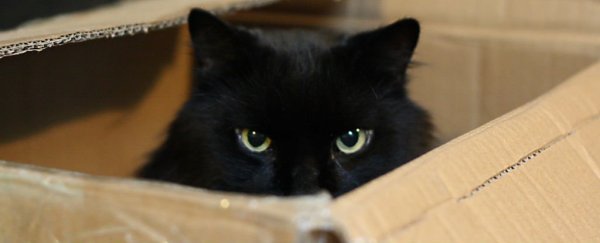Physicists have figured out how to 'breed' Schrödinger's cat - an object in a quantum superposition of two states with opposite properties - to produce enlarged versions that could one day reveal the limits of the quantum world.
If they can continue to breed their 'cats' even bigger, the experiment could finally reveal the exact point at which objects switch between classical and quantum physics - the divide between the microscopic and macroscopic worlds that physicists have been chasing for decades.
"One of the fundamental questions of physics is the boundary between the quantum and classical worlds. Can quantum phenomena, provided ideal conditions, be observed in macroscopic objects?" says physicist Alexander Lvovsky, who led the team from the University of Calgary and the Russian Quantum Centre.
"Theory gives no answer to this question - maybe there is no such boundary. What we need is a tool that will probe it."
The original Schrödinger's cat thought experiment states that if you put a live cat in an explosion-proof box with a bomb, until you open the box, you'll have no idea if the bomb exploded and the cat died. Or maybe the bomb didn't explode and the cat is still alive.
From our perspective, as long as the box is shut, the cat is occupying two realities. It's both dead and alive, because we can't confirm which one, but we know it can't be neither.
This isn't just a hypothetical question - in quantum physics, being in two different states at the same time is known as a superposition state, and it's the entire basis of quantum computing, which is set to revolutionise how we process data in the future.
Since this hypothetical scenario was proposed back in 1935, physicists have figured out how to perform the experiment for real using microwave photons, which can be polarised both vertically and horizontally at the same time until someone actually measures their polarisation. Although the 'cat' nickname has stuck.
Physicists have used this technique to create two Schrödinger's 'cats' - they were actually particles of light, not real cats - in two quantum 'boxes' at the same time, and late last year, they managed to film the phenomenon in atoms for the first time.
But now, Lvovsky and his team have figured out how to generate enlarged 'cats' with higher amplitudes than ever before.
The experiment involves achieving a superposition of two coherent light waves where the fields of the electromagnetic waves point in two opposite directions at once.
They then generated new, higher amplitude 'cats' by running these waves through a beam splitter.
"This leads to an entangled state in the two output channels of that beam splitter," Lvovsky explains.
"In one of these channels, a special detector is placed. In the event this detector shows a certain result, a 'cat' is born in the second output whose energy is more than twice that of the initial one."
When the team measured the results, they found that they could convert a pair of negative 'Schrödinger cats' of amplitude 1.15 to a single positive 'cat' of amplitude 1.85, and they could repeat the experiment to generate several thousand enlarged 'cats'.
"It is important that the procedure can be repeated: new 'cats' can, in turn, be overlapped on a beam splitter, producing one with even higher energy, and so on," says one of the team, Demid Sychev, a graduate student from the Russian Quantum Centre.
"Thus, it is possible to push the boundaries of the quantum world step by step, and eventually to understand whether it has a limit."
It's heady stuff, but crucial to our ongoing understanding of the laws of physics that govern our Universe.
We know that the rules of the quantum realm, which explain how atoms operate on an extremely small scale, have to somehow be linked to the classical realm - rules governing bigger systems, such as stars, rockets, and human beings - but so far, no one's been able to link the two.
Gravity doesn't appear to affect quantum systems like it does in our world, and classical physics can't explain the 'spooky action at a distance' of quantum entanglement.
If we can pinpoint the boundary at which quantum systems begin to be governed by classical physics, we could finally understand this divide between worlds - and perhaps enlarged Schrödinger cats will be the thing that gets us there.
The research has been published in Nature Photonics.
